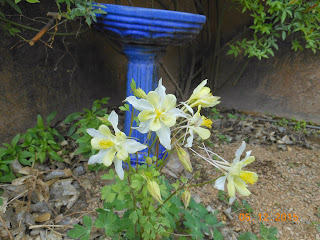Jupiter’s Beard and
Columbine are two flowering perennials that combine
to make a colorful floral statement.
Jupiter’s Beard is also
known as Red Valerian. It is a short bushy flowering perennial. The red flowering variety is most commonly
seen
but there is also a white
flowering variety that is just as worthy of planting in your garden space.
Jupiter’s Beard flowers
from spring until frost. This perennial does best when grown in a part sun
garden spot. Oval Lance like leaves are gray-green in color.
Columbine is another flowering perennial that
can be found in a great variety of flower colors.
Like Jupiter’s Beard,
Columbine does very well when planted in a part sun garden space.
Jupiter’s Beard and
Columbine thrive on a low to regular water schedule.
Mulch well to conserve
water.
Trees That Please Nursery
has these and other flowering perennials
available in one gallon containers
that are ready for planting.
Photos and Narrative By:
Stephen Sain
Staff Plant Physiologist
Stephen Sain
Staff Plant Physiologist
Trees That Please Nursery
A Retail and Wholesale
Nursery
Serving Albuquerque,
Santa Fe, Los Lunas, and Belen
Shade Trees, Fruit Trees,
Shrubs, Cacti, Perennials, Gardening Advice





Comments